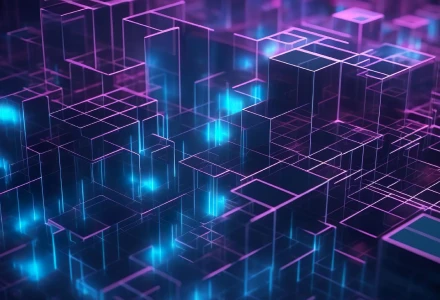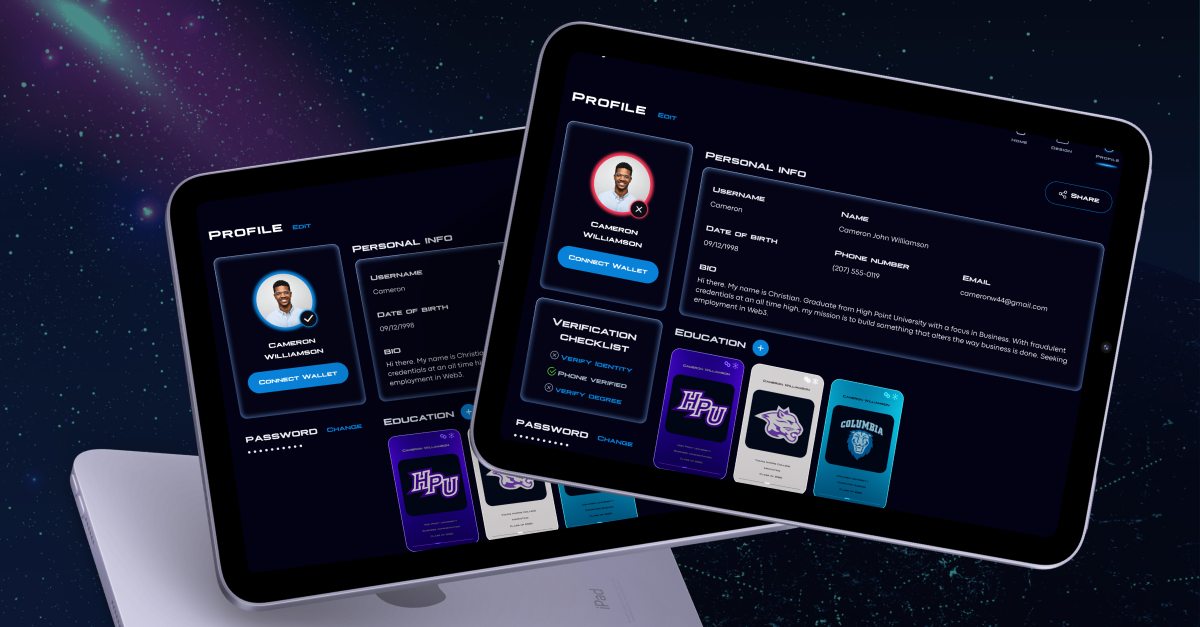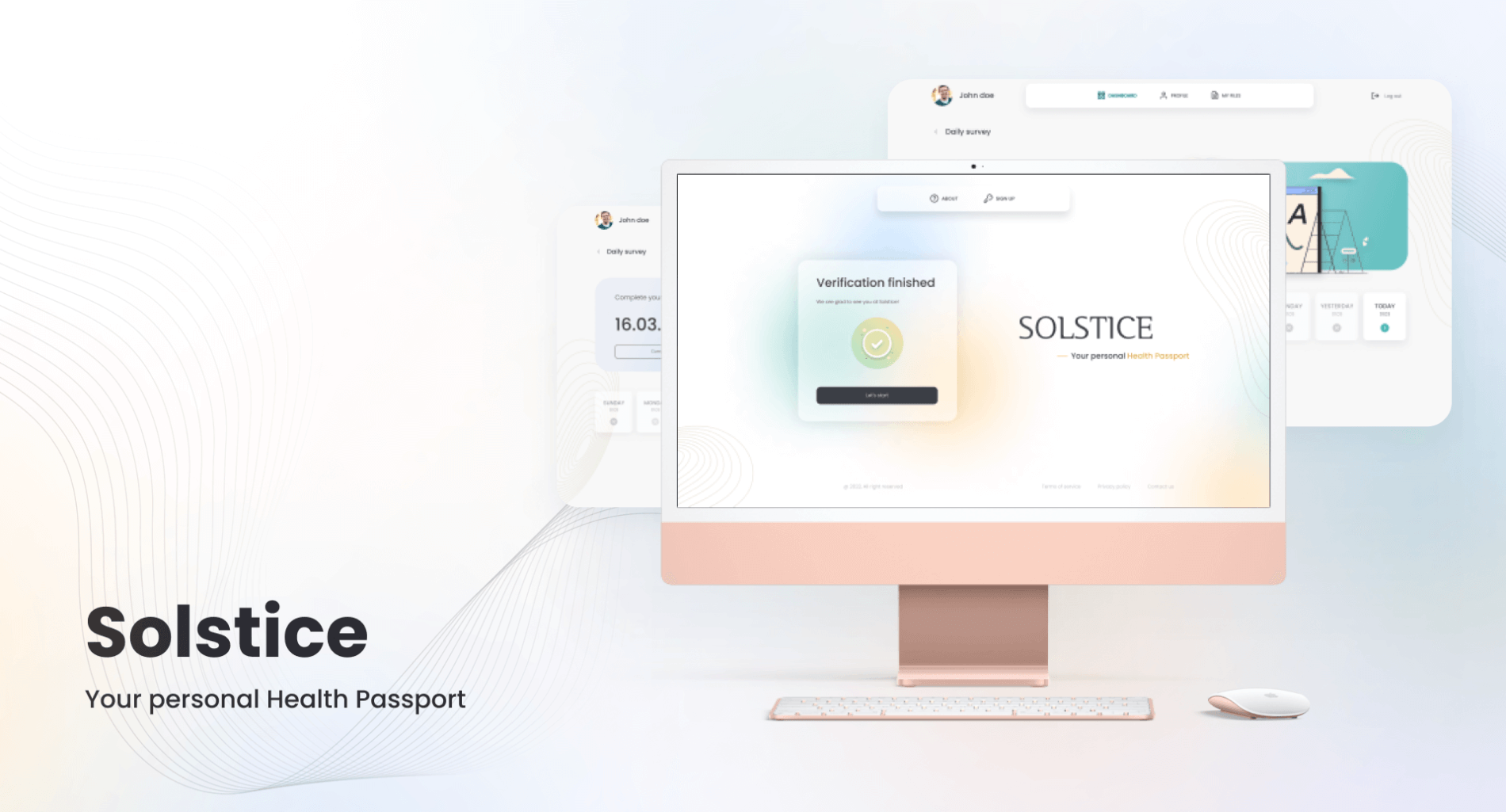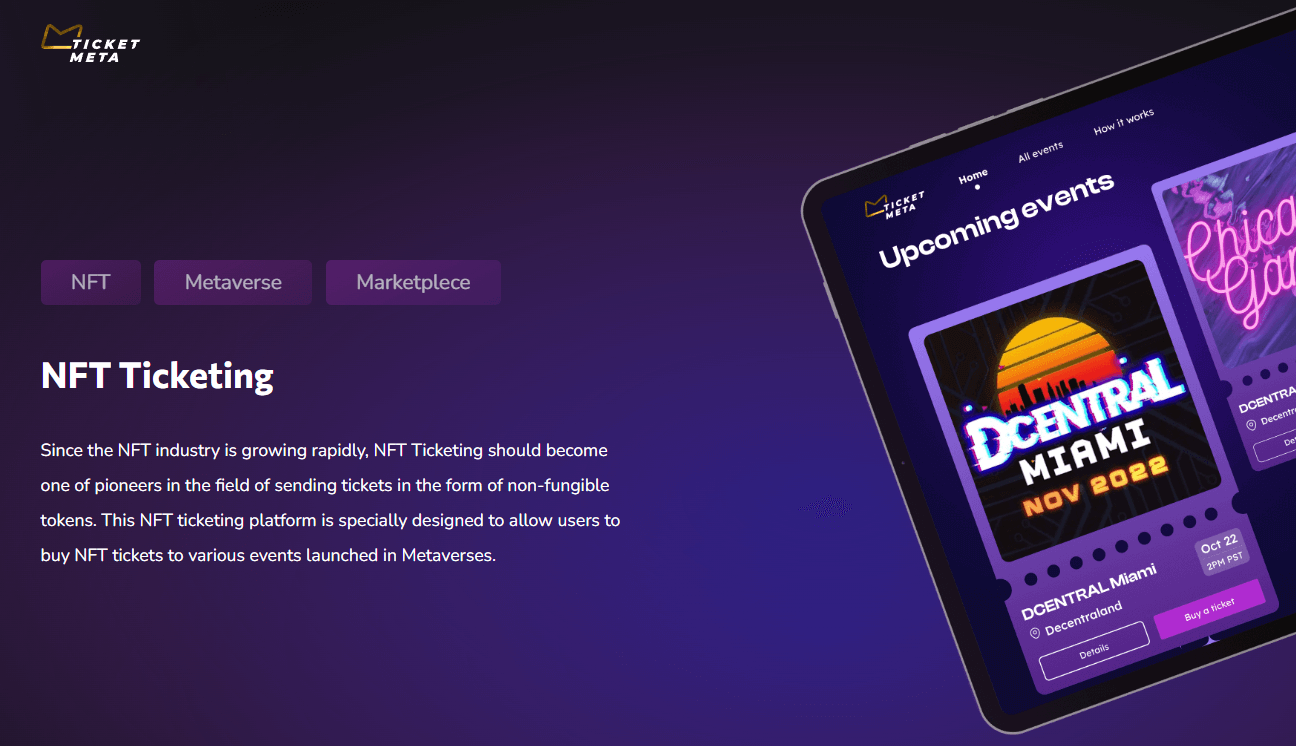Decentralized applications, more known as dApps, are software that doesn’t rely on a centralized server or backend; instead, using Web3 technologies like blockchains and oracles to work with their logic and backend functions, making dApps much more secure and tamper-proof.
We curated this article to help you explore “What is web 3.0?” and decentralized app development with features, process, and cost while also showing why and how these apps can benefit modern businesses. Knowing the process and some tips can help you understand why building a decentralized app is a worthy idea in 2024.
Key Statistics
 $2.3 billion
$2.3 billion
In 2023, the Global Web 3.0 Blockchain Market size was valued at $2.3 billion.
 GAGR of 44.8%
GAGR of 44.8%
Market suggested to grown with a GAGR of 44.8% during the forecast period of 2023-2030.
 $45.4 billion
$45.4 billion
Global Web 3.0 Blockchain Market Revenue is suggested to reach $45.4 billion by 2030.
Definition of a dApp

The term Web3, sometimes written as web 3.0, came in 2014 by computer scientist and co-creator of Etherium Gavin Wood in a post on his blog. The whole idea of Web3 is to give the community the ownership and decision-making process.
A decentralized application, dApp for short, is like any app that you can find on your phone or laptop but contains additional features of employing blockchain technology to increase the safety of user data. Just like cryptocurrency represents decentralized money, dApps represent decentralized apps.
The blockchain ledger in dApps stores copies of its expanding stack of information on a large number of participating computers, which are called “nodes,” all at once. And the key thing here is that these computers are owned by users, not by the developers of the dApp.
dApps are also varied, meaning they can be developed for social networks, games, entertainment, productivity tools, and many more. Most of these apps are specially developed to help users get easy access to decentralized financial services or, in the case of businesses, to DeFi app development.
A decentralized app is a key element in Web 3.0 identity solutions. It is designed to prioritize user sovereignty over their digital identities and destroy single entity ownership over the majority of data flow. In the Web 3.0 landscape, dApps leverage decentralized identity protocols to achieve this aim.
These protocols enable users to control their personal data without relying on centralized authorities, putting them firmly in charge of their online presence. Through cryptographic mechanisms, decentralized identity ensures secure and private authentication, while advanced encoding methods reduce data breaches during transactions.
Experts believe that as Web 3.0 continues to evolve, dApps will remain at the forefront of the movement, enabling individuals to reclaim control over their identities in a decentralized and trustless manner.
Explore more. Our consultants are always eager to answer your questions.
Book a callDifference Between a dApp and App
Before we find out “How to make a dApp” it is important to understand that in software development, distinguishing between a traditional app and a decentralized app (dApp) entails delving into the intricacies of their architectures, underlying technologies, and operational paradigms.
Architecture and Centralization
Traditional apps are based on a centralized architecture, where the application’s logic, data storage, and processing are predominantly hosted on a central node, which may be represented as the infrastructure of a server controlled by a single entity. It acts as an intermediary for data transactions and also dictates the app’s behavior sequences.
In decentralized application development, apps operate on a fundamentally distinct architectural model. They leverage blockchain technology, which is inherently decentralized. A dApp’s logic often relies on blockchain technology tools like smart contracts. These smart contracts include the application execution logic, like validation processing. They are executed by a network of nodes, eliminating the need for a central server.
Ownership and Control
Users of traditional apps typically have limited ownership and control over the app’s functionality and data. The developer or central authority maintains substantial control.
In decentralized app development, users of dApp possess greater ownership and control. Open-source development and decentralized governance models empower users to influence the application’s evolution and their participation in the decision-making processes.
Data Privacy and Security
Traditional apps often centralize user data storage, making them vulnerable to single-point failures, unauthorized access, and data breaches.
When building a decentralized app, ensuring data privacy and security is crucial. Data is typically stored on the blockchain, employing cryptographic techniques and user-controlled private keys to enhance security and minimize vulnerabilities.
Monetization Strategies
Revenue generation for traditional apps typically relies on app purchases, subscription models, advertising, or in-app purchases.
dApps often introduce cryptocurrency tokens as integral components of their ecosystems and facilitate several ways of monetization. Tokenomics can involve rewarding users who participate in network activities, facilitating decentralized governance, and attributing real-world value to tokens.
Innovations Implementations
Traditional apps may explore blockchain integration as a separate initiative. While they can benefit from blockchain’s transparency and security, the integration process is often more complex and may not be as deeply ingrained in their architecture.
If someone decides to create a dApp it will be definitely based on blockchain, which serves as their foundational infrastructure. This integration allows dApps to seamlessly adopt and leverage new blockchain innovations, such as layer 2 solutions, sharding, and cross-chain interoperability, to enhance scalability, security, and functionality.
Trust Models
Users of traditional apps rely on trust in the central authority managing the app’s infrastructure. Trust is placed in the entity’s ability to safeguard user data and maintain system integrity and application stability.
dApp blockchain application development, trust based on the underlying blockchain network’s consensus mechanism and the smart contracts. These tools are essential for governing the application and transaction management. The last ones are validated through cryptographic methods and consensus algorithms, reducing the necessity for trust in a single entity.
The Role Of dApps In Web 3.0
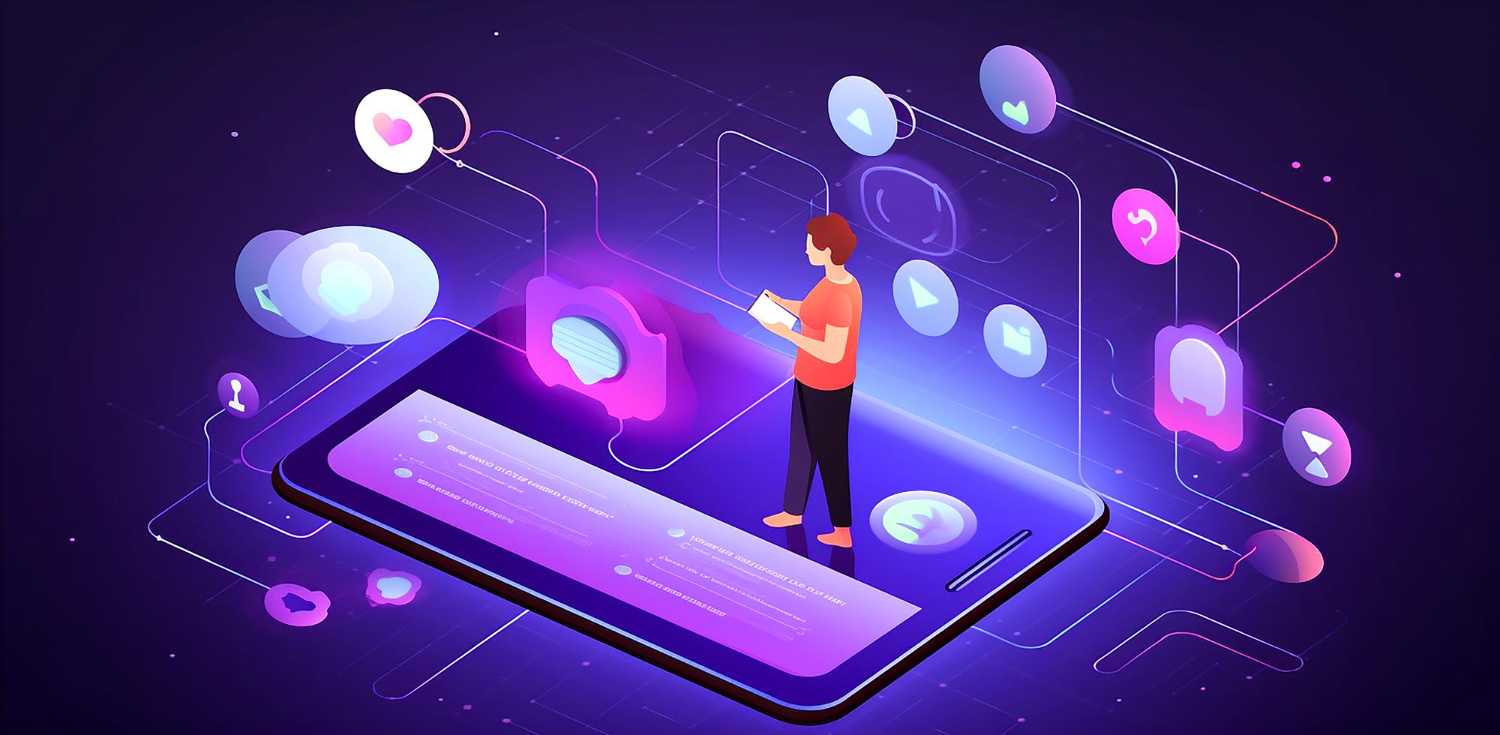
The role of dApps in the Web3 landscape also focuses on the use cases of dApps. Explore the following key applications of dApps in different sectors below:
-
Social Media Applications
The first use of dApps in web3 dApps is social media apps. Most popular social media platforms, including Instagram and Facebook, are known as integral highlights in the life of modern people today. However, it is worth noting that social media apps have a huge control and store lots of personal user data. Therefore, the need for more secure data storage in social media platforms is an obvious necessity.
-
Cloud Storage
dApps in the Web 3.0 landscape also become evident in cloud storage. Today’s most well-known data storage servers, including AWS, are completely centralized in nature. Thereby, there is a high chance that the data stored in these servers can be modified or distributed to third parties without user permission or control. That is why decentralized solutions designed for data storage would help users feel safe and avoid storing their sensitive information on a centralized server.
-
Browsers
While it isn’t obvious, one of the most interesting uses of Web3 dApps is browsers. Conventional browsers like Google and Firefox are centralized in nature. To be more specific, the centralized nature means that the browsers are allowed to store personal user data such as location, social media information, some passwords, and other details that can compromise the user in case of poor security.
-
Streaming Applications
As we mentioned, dApps are also designed for entertainment which has also become one of the significant highlights in the web3 landscape. Popular streaming apps like Netflix, YouTube, Amazon Prime Video, and Spotify are also centralized. Just like with other dApps uses, centralized platforms can also impose censorship on user information while also exposing users to target advertising campaigns.
That is why building a dApp in the field of music and video streaming applications has been shown to bring plausible improvements, allowing content creators to get reasonable value for their efforts while also resolving copyright problems.
-
Messaging Applications
Finally, the most vital use case of dApps is messaging apps. Most modern users want to have private, decentralized messaging. That is because secure and private messaging has become one of the prominent needs in the web3 landscape that help avoid privacy violations, data hacks, and cyber attacks.
Have some questions?
5 Steps of Developing a dApp
-
Write a Smart Contract
A smart contract is a set of rules and agreements based on which the app works. And it is also a place you’d put the decentralized logic of your dApp. The smart contract answers the questions like:
- What do you want the dApp to perform automatically?
- What actions happen if rules are met?
- What actions do you want the dApp to perform relying on the chain consensus?
-
Develop Front Ends
Your development team won’t be able to build a decentralized app without developing “normal” user-facing mobile and web applications. Therefore, even though user actions trigger some smart contract functions on a blockchain ledger instead of connecting with a central server, this should have a minimal impact on the UI.
So if you want to provide a great user experience, it is best to start with a prototype:
- low-fidelity UI;
- high-fidelity UI;
- user testing;
- reinforce the UI/UX based on the feedback.
-
Develop Centralized Back End
If you develop Ethereum dApps that need massive data storage, or you are going to plan on running reports or envision any other functionality that is out of the concept, your app will require a web solution located on a private server.
Therefore, an admin portal will connect to written smart contracts and front-end apps for users to offer extra features to you as an app owner to manage the app and users.
-
Test Rigorously
Like with any other app development, testing is an essential part of the process. It is recommended to use the Agile methodology to boost the development process and make testing possible as soon as you can. Every new feature and new part of the product should be tested by your QA team. While testing front-end apps is a standardized procedure, smart contract testing is unique and requires a testnet to verify its functionality.
-
Deploy and Maintain
The final step of the dApp development is to deploy your dApp. This means uploading mobile applications to the App Store and Google Play, switching your backend part to a live production environment, and adding a smart contract to the blockchain.
Pros and Cons of dApp Development
There is a vast range of pros and cons of decentralized applications that you can explore below:
Pros
-
Security
Security is currently the biggest pros of dApps since they don’t depend on a centralized server for authentication; therefore, they possess higher security than traditional applications. This helps you attract more users and lessens the risk of a successful hacker attack that can ruin the business.
-
Cost-Efficient
Creating dApps does not require a server as the Web3 app is hosted on servers all across the decentralized web. Therefore, you can save a lot of money since you won’t have to rent server space or maintain a data center. In addition, the transaction speed in dApps is higher, meaning you get at-scale apps with built-in failover without extra work.
-
Less Downtime
If the decentralized web is able to fulfill its promise, dApps can eliminate downtime. Since dApps don’t connect to a single, centralized server, businesses can guarantee absolutely minimal interruptions to services. Therefore, they won’t need to worry about applications going down. Ever.
-
Never Lose Data
Since the dApp is hosted across an entire decentralized network, there is no risk of losing data. Even if one node on the blockchain ledger goes down, there are more that are with your dApp data in sync, meaning you won’t miss a beat.
Cons
-
Steep Learning Curve
dApps and blockchain run on top of a very complex networking environment. Even though these apps share some similarities with traditional ones, the development of dApps will require unique skills and a new way of thinking from your developers, operations, and administrators.
-
Higher Security Needed
As we mentioned, decentralized networks both possess and require an absolutely new level of security. That is because the app is dealing with a global network, meaning your application must be resistant to a vast range of attacks. Therefore, you will need a highly experienced team that can be able to use the latest complex technologies to guarantee protection.
-
Lesser User Experience
dApps are new apps for most users. Even though people are looking for higher security, these apps need time to deliver the best user experience. For instance, the login process is completely different from traditional apps. In contrast to inputting traditional username/password authentication, users will need to work with public/private key authentication methods.
-
Slower Speeds
Since dApps are still in their development stages, they might be slower than traditional ones. However, this will improve in upcoming months and years, when more and more businesses will develop dApps.
Must-Have Features of dApps

Crypto Wallet
User registration in dApps always starts by connecting a crypto wallet, meaning it is an essential part of any app working on a blockchain. Therefore, your users will need a wallet to get bonuses and awards in the form of cryptocurrencies, digital money, or non-fungible tokens (NFTs).
Token
It is worth noting that any dApps has its own unique token that users need to access different software options. This token fuels transactions that occur in the app’s background, meaning it is essential.
Transaction-Based Actions
Like any other application, dApp should also perform a specific action and solve a specific problem. However, dApps differ from traditional ones because decentralized apps require transactions to work.
Examples of Decentralized Apps

Crypto Wallets and Exchanges
MetaMask is an Ethereum digital wallet and useful browser extension that enables users to interact with Ethereum-based dApps directly from their browsers.Uniswap is a decentralized exchange (DEX) dApp that allows users to swap various cryptocurrencies without needing a centralized intermediary. It is also a great example of Web3 in banking implementation.
Decentralized Finance (DeFi)
Compound is a lending and borrowing platform. It operates as a dApp, enabling users to earn interest by lending their cryptocurrencies or borrowing assets by providing collateral.
Aave is another DeFi lending and borrowing platform that offers various features, including flash loans and decentralized governance.
Non-Fungible Tokens (NFTs)
OpenSea is a decentralized marketplace for NFTs, offering users a platform for trading, buying, and selling digital collectibles, art, and virtual real estate.
CryptoKitties is an NFT dApp where users can collect, breed, and trade unique digital cats, each represented as an NFT.
Decentralized Social Media
Minds is a social media platform that operates in a decentralized way. It rewards users with cryptocurrency for their contributions and engagement.
Steemit is a blockchain-based social media network where content creators are rewarded with STEEM tokens based on the popularity of their posts.
Supply Chain and Logistics
VeChain is a blockchain platform that offers dApps for supply chain management, ensuring transparency and traceability of products from source to destination.
OriginTrail is a decentralized protocol for supply chain data sharing and integrity.

Gaming and Virtual Worlds
Decentraland is a digital platform that represents a virtual world. It is powered by the Ethereum blockchain, where users can buy or sell virtual land parcels, as well as build something on them.
Axie Infinity is also a blockchain-based game that allows players to collect, breed, and battle fantasy creatures known as Axies.
File Storage and Sharing
Filecoin is not just a cryptocurrency but also a decentralized storage network incentivizing users to provide and utilize decentralized storage resources.
While not a dApp, IPFS (InterPlanetary File System) is a protocol for decentralized and peer-to-peer file sharing, with various dApps built on top.
Identity and Authentication
uPort is a self-sovereign identity platform that enables users to control and selectively share their digital identities.
Gaming and Entertainment
Rarible is a decentralized marketplace and platform for creating, buying, and selling NFTs related to digital art, music, and collectibles.
Audius is a decentralized music streaming platform that empowers artists by allowing them to distribute their music without intermediaries.
Governance and Voting
DAOstack is a platform for decentralized autonomous organizations (DAOs) that facilitates collective decision-making and governance through tokens and proposals.
Aragon provides dApps for creating and managing DAOs, allowing users to participate in decentralized governance.
How Much Does it Cost to Develop a dApp?
Now we know ‘how to build a dApp’ but what about cost? The cost of dApp development varies from company to company while also depending on complexity, timelines, goals, and other factors. Let’s take a prototype of a decentralized application. The cost of it may vary between $60,000 and $80,000, depending on its feature set. We recommend you check blockchain development services to explore more about dApp development in the Web3 landscape.

How Can Interexy Help?
Interexy is one of the most trusted blockchain app development companies having in-depth expertise in smart contracts, dApps, and Web3 space in general. As pioneers in that field, we’ve already developed many projects running on blockchain for various industries, like Healthcare and Gaming.
We’ve also been a development partner for Lil Durk NFT drop and now work with Sandbox for all NFT launches. While NFT is one of our core focuses, our development team comprises professionals from different industries with outstanding knowledge, unique mindset, and skill sets to build stable, efficient, and secure dApps.
For example, we are working on OtherWorlds.ai, which is going to become digital asset storage and entertainment in the metaverse. The idea of the app is to allow users to buy an item (clothes, jewelry, car, house, and so on) in real life and get its digital copy in the app. This also will allow users to dress up their avatars in Metaverse just like they look in real life while also giving their avatars any item they have bought them psychically.
Final Thoughts

While dApps seem like some gimmick of the present, they are going to change the future and give users more opportunities in Web3. Given their presence, they have already brought many changes to the present world and even allowed DAOs to enter the place.
Always open to new ideas!
FAQs
-
What is a Web 3.0 decentralized app (dApp)?
A Web 3.0 decentralized application (dApp) is an application that operates on a decentralized network, typically built on a blockchain platform.
Unlike traditional apps, which run on centralized servers, dApps function on a peer-to-peer network, offering enhanced security, transparency, and resistance to censorship.
They often involve smart contracts for automating processes and can include various functionalities, from financial services to social media.
The decentralized nature of these apps aligns with the ethos of Web 3.0, which emphasizes user sovereignty and data privacy.
-
What does decentralization mean?
Decentralization refers to distributing and delegating power, authority, or functions away from a central location or authority. In the context of technology and blockchain, it means that operations and decisions are made across a distributed network rather than by a single central entity.
This approach enhances security, transparency, and resistance to censorship, as it relies on a collective consensus for decision-making and typically has no single point of failure. Decentralization is a fundamental principle of blockchain technology and is crucial to the operation of cryptocurrencies and decentralized applications (dApps).
-
How to build a decentralized app (dApp)?
Building a decentralized app (dApp) involves several key steps:
- Choose a Blockchain Platform: Select a blockchain platform like Ethereum, Binance Smart Chain, or Polkadot, based on your needs and the support for smart contracts.
- Smart Contract Development: Understand the programming language used by the chosen platform, such as Solidity for Ethereum. Write the smart contracts that will govern the operations of your dApp.
- Front-end Development: Create the user interface of your dApp, which can be done using conventional web technologies.
- Integrate with a Blockchain: Connect your front-end to the blockchain using libraries like Web3.js or ethers.js.
- Test and Deploy: Test your dApp thoroughly on a testnet before deploying it on the mainnet.
- Maintain and Update: Continuously monitor, maintain, and update your dApp for security and performance.
-
Should I build a dApp on Ethereum or some other chain?
Ethereum has a well-established and extensive developer community, comprehensive documentation, and a robust ecosystem. It supports Solidity for smart contracts, which is widely used.
While other blockchains like Binance Smart Chain, Polkadot, or Solana may offer advantages such as lower transaction fees, faster throughput, or unique features that better suit your dApp’s requirements, it is important to assess factors such as scalability, transaction costs, speed, and the nature of your dApp.
Additionally, consider the size of the developer and user community, as this can impact support and adoption.
-
What's the main difference between a decentralized app and other applications?
The primary distinction between a decentralized app (dApp) and a traditional app is the underlying infrastructure. A dApp operates on a decentralized network, usually a blockchain, which ensures data integrity, security, and transparency.
It typically uses smart contracts for operations, eliminating the need for central authorities or intermediaries. In contrast, traditional apps rely on centralized servers, which can be a single point of failure and are controlled by a single entity.
-
Can I use cross-platform mobile frameworks like react native to make a decentralized app?
Cross-platform mobile frameworks like React Native can be used to build decentralized apps (dApps). React Native enables the creation of a user interface for dApps, which can be integrated with blockchain technologies using various libraries and APIs.
The blockchain logic, typically handled by smart contracts, operates independently of the frontend. React Native is used to develop the frontend and integrate it with the blockchain backend using tools such as Web3.js or ethers.js to interact with Ethereum or other blockchain networks.




